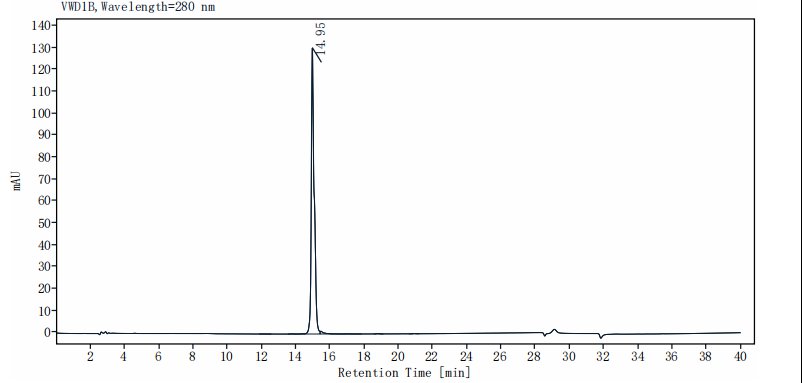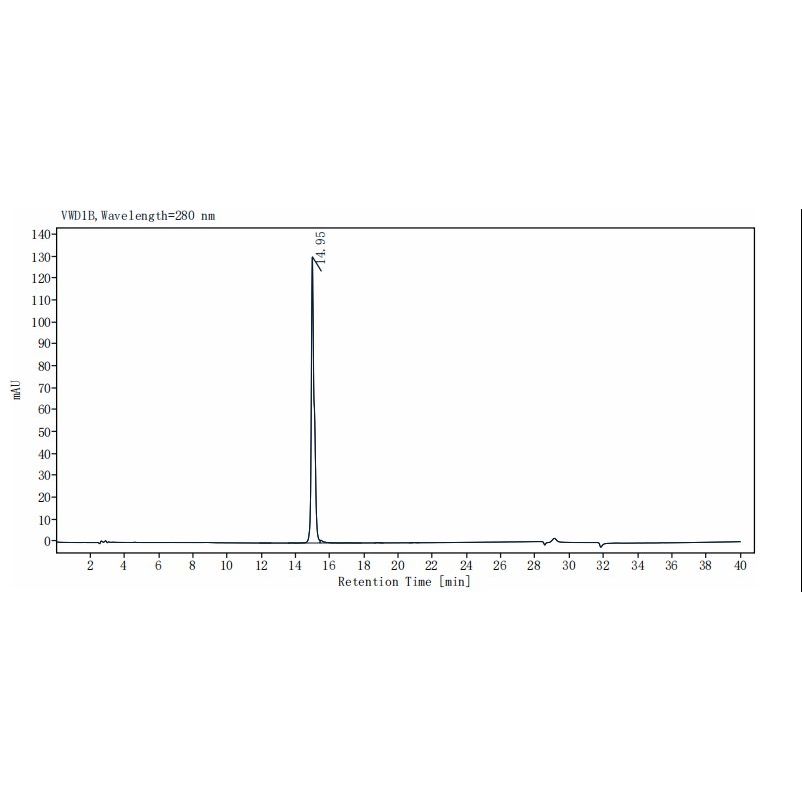1μg (R: reducing condition, N: non-reducing condition).
Product Details
Product Details
Product Specification
| Species | Rat |
| Synonyms | Fractalkine, C-X3-C motif chemokine 1, CX3C membrane-anchored chemokine, Neurotactin, Small-inducible cytokine D1 |
| Accession | Q55145 |
| Amino Acid Sequence | Gln25-Gly100 |
| Expression System | E.coli |
| Molecular Weight | 9kDa (Reducing) |
| Purity | >95% by SDS-PAGE&HPLC |
| Endotoxin | <0.1EU/μg |
| Conjugation | Unconjugated |
| Tag | No Tag |
| Physical Appearance | Lyophilized Powder |
| Storage Buffer | 20mM Tris, 200mM NaCl, pH8.0 |
| Reconstitution | Reconstitute at 0.1-1 mg/ml according to the size in ultrapure water after rapid centrifugation. |
| Stability & Storage | · 12 months from date of receipt, lyophilized powder stored at -20 to -80℃. · 3 months, -20 to -80℃ under sterile conditions after reconstitution. · 1 week, 2 to 8℃ under sterile conditions after reconstitution. · Please avoid repeated freeze-thaw cycles. |
| Reference | Cells. 2020 Oct 13;9(10):2277. |
Background
Fractalkine (FKN, CX3CL1) is a transmembrane chemokine expressed by neurons in the central nervous system (CNS). It signals through its unique receptor, CX3CR1, that is expressed in microglia. The biological effects elicited by CX3CL1 on surrounding cells vary depending on a number of factors including its structure, the expression pattern of CX3CR1, and the cell type. Fractalkine/CX3CL1 chemokine ligand 1 (CX3CL1) is a chemokine involved in the anticancer function of lymphocytes-mainly NK cells, T cells and dendritic cells. Its increased levels in tumors improve the prognosis for cancer patients, although it is also associated with a poorer prognosis in some types of cancers, such as pancreatic ductal adenocarcinoma.
Picture
Picture
SDS-PAGE
RP-HPLC

>95% as determined by RP-HPLC.


